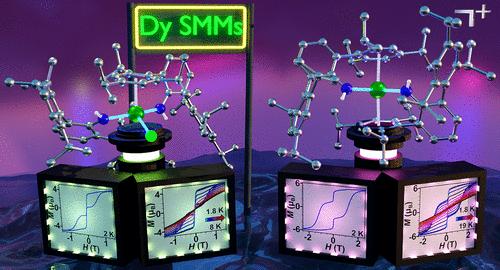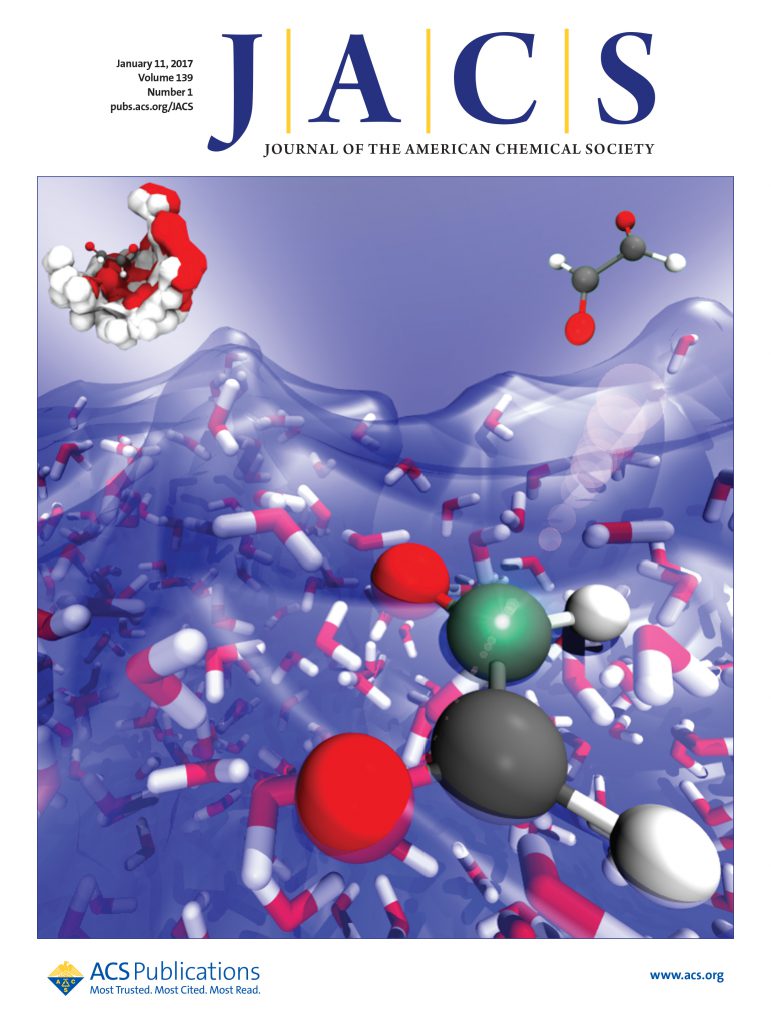Magnetic Hysteresis in a Dysprosium Bis(amide) Complex
IF 14.4
1区 化学
Q1 CHEMISTRY, MULTIDISCIPLINARY
引用次数: 0
Abstract
Here, we present the synthesis and characterization of two mononuclear dysprosium molecules. The first complex is neutral and contains two triarylamide ligands coordinating to a DyIII ion that is additionally ligated to a chloride anion, in the form of (NHAr*)2DyCl (1). Treatment of 1 with Tl[BArF24] prompted the removal of the chloride as TlCl from the first coordination sphere to afford the mononuclear DyIII complex, [(NHAr*)2Dy][BArF24] (2), with a cationic [(NHAr*)2Dy]+ core. 1 and 2 were investigated through single-crystal X-ray diffraction analysis, UV–vis spectroscopy, and SQUID magnetometry. Both compounds are single-molecule magnets with magnetic hysteresis. The determined effective spin-reversal barriers and preattempt times for 1 and 2 are Ueff = 601(2) cm–1 and 598(2) cm–1, and τ0 = 4.2(1) × 10–10 s and 3.1(2) × 10–10 s, respectively. Ab initio calculations were conducted on both molecules which uncovered the energy of the crystal field states of DyIII and affirmed the effective energy barrier height. Notably, the extrusion of the halide ion has huge ramifications on the magnetic relaxation: While 1 features butterfly hysteresis loops up to 8 K that are closed at zero field at all temperatures probed, 2 exhibits a much higher magnetic blocking temperature of TB = 19.0 K and substantial coercivity of HC = 1.03 T. Remarkably, both the TB and HC observed for 2 constitute a record for mononuclear single-molecule magnets where the metal is either sandwiched by two arene ligands or stabilized by amide functionalities, respectively.

求助全文
约1分钟内获得全文
求助全文
来源期刊
CiteScore
24.40
自引率
6.00%
发文量
2398
审稿时长
1.6 months
期刊介绍:
The flagship journal of the American Chemical Society, known as the Journal of the American Chemical Society (JACS), has been a prestigious publication since its establishment in 1879. It holds a preeminent position in the field of chemistry and related interdisciplinary sciences. JACS is committed to disseminating cutting-edge research papers, covering a wide range of topics, and encompasses approximately 19,000 pages of Articles, Communications, and Perspectives annually. With a weekly publication frequency, JACS plays a vital role in advancing the field of chemistry by providing essential research.

 求助内容:
求助内容: 应助结果提醒方式:
应助结果提醒方式:


